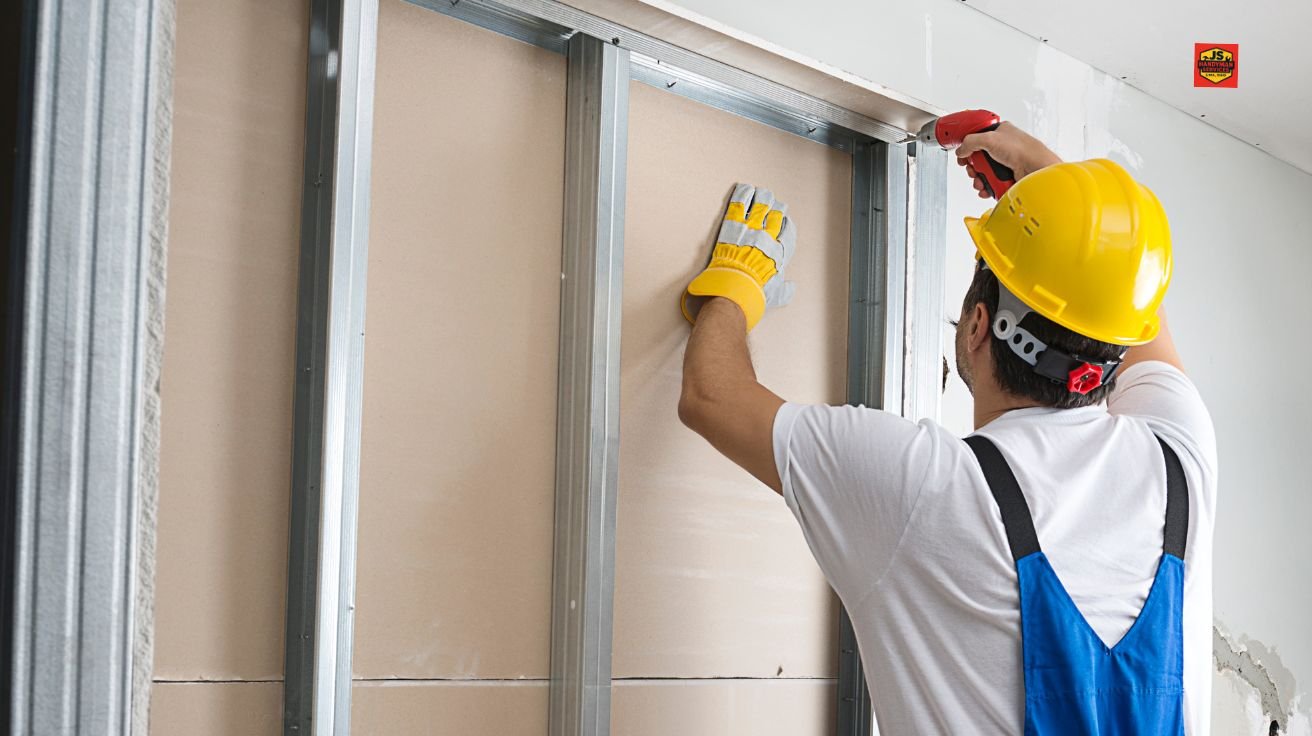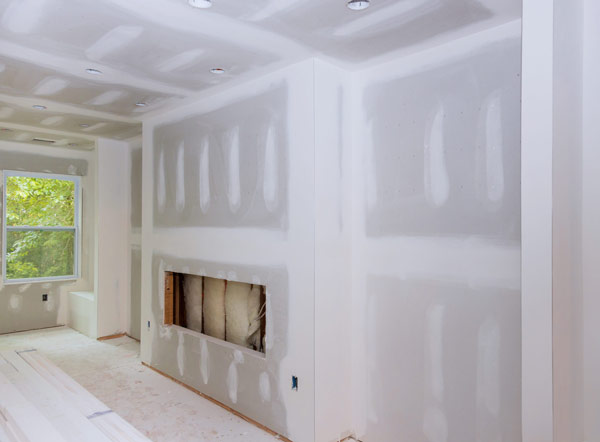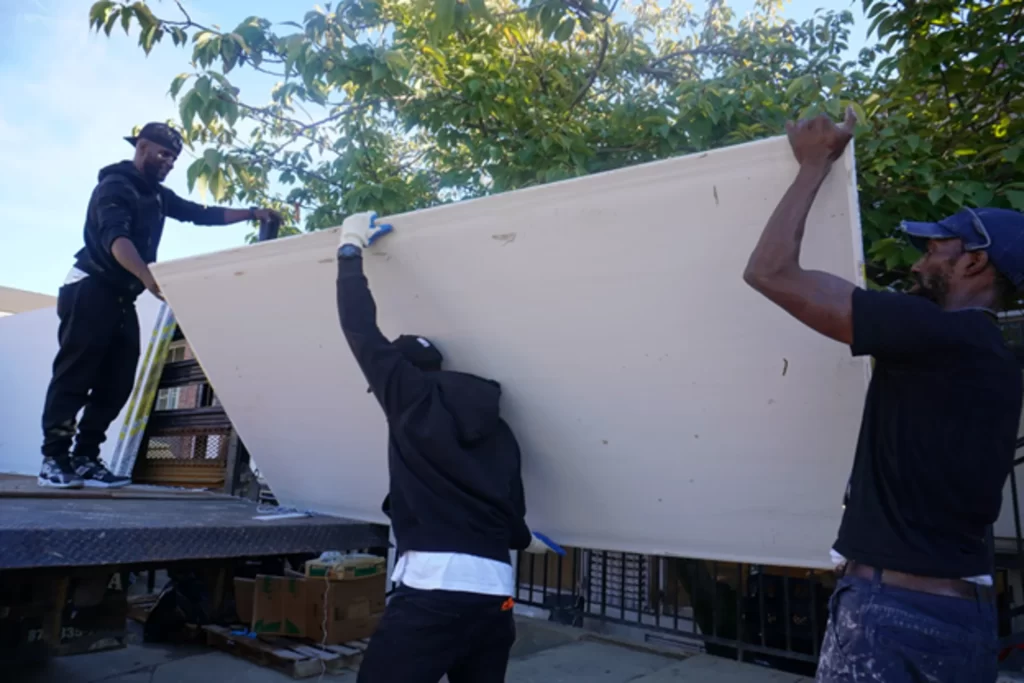Experience top-quality finishes from leading drywall contractors in combination with Interior Painting.
A Comprehensive Guide to Learning Drywall Repair and Setup
This overview uses a thorough expedition of drywall repair service and setup, catering to both novices and seasoned professionals. It describes crucial tools, techniques for patching and hanging sheets, and the essential completing processes. drywall contractor. By understanding usual mistakes, individuals can accomplish polished outcomes. Mastering these abilities not just boosts one's home however likewise constructs confidence in do it yourself undertakings. What foundational tips will guarantee a successful project throughout?
Crucial Devices for Drywall Repair and Setup
When beginning on drywall repair work and installment, a couple of important tools can substantially boost the efficiency and high quality of the job. A drywall knife, generally offered in numerous dimensions, is vital for using joint substance and smoothing seams. A taping knife is also necessary for feathering edges and ensuring a seamless coating. Furthermore, a drywall saw or utility knife permits accurate cutting of drywall sheets to fit any type of space.

Step-by-Step Overview to Patching Holes
Patching holes in drywall is a simple procedure that can recover the wall's look and stability. To begin, the area around the opening ought to be cleaned up and any kind of loose debris eliminated. For small openings, a simple spackle or joint substance can be applied with a putty blade. Bigger openings might need a patch; an item of drywall can be cut to fit the opening, protected with adhesive or screws, and after that taped around the sides. When the spot is in place, joint compound is applied over the patch and feathery out to blend with the surrounding wall surface. After the compound dries, sanding is needed to achieve a smooth coating. The repaired location can be keyed and painted to match the remainder of the wall. This approach assures a smooth repair, boosting the total appearance of the drywall and maintaining its architectural honesty.
Techniques for Hanging Drywall Sheets
After efficiently repairing holes in drywall, the next action includes hanging new drywall sheets to develop a seamless surface. To accomplish this, one must begin by determining the wall surface space precisely and cutting the drywall sheets to fit. It is essential to hang the sheets flat for far better structural stability, starting from the top and functioning downwards.
Using a drywall lift can simplify the process, especially for ceiling installments. Once positioned, protecting the sheets with drywall screws at periods of about 12 inches along the edges and 16 inches in the field is crucial. This assures a solid hold and minimizes the risk of sagging. For edges, the sheets must be reduced to fit snugly, enabling cleaner seams. Finally, it is a good idea to startle the joints between sheets to reinforce the general structure, developing an extra sturdy finish ready for the next phase in the drywall installation process.
Completing Touches: Taping and Mudding
Finishing the drywall installation includes the vital actions of mudding and taping, which ensure a sleek and smooth finish. Taping calls for the application of joint tape over the seams in between drywall sheets. Drywall Repair Ogden UT. This tape can be either paper or fiberglass harmonize, with each type offering distinct benefits. After taping, the following step is mudding, where joint substance, or "mud," is put on cover the tape and fill up any type of flaws
Utilizing a drywall knife, the substance must be spread uniformly, ensuring a feathered edge to minimize visible modifications. Several layers are often necessary, with sanding in between each layer to attain a seamless surface area. Careful interest during this procedure is essential, as it significantly affects the final appearance of the wall surface. With the best method and perseverance, the end result will certainly be a perfect structure prepared for paint or completing touches.
Common Blunders to Avoid in Drywall Projects

Another usual mistake is not enabling sufficient drying time in between layers, which can catch wetness and jeopardize the finish. Disregarding to feather the edges properly can create visible lines and imperfections. Missing sanding or making use of inappropriate methods might leave rough areas. By being conscious of read these mistakes, people can significantly boost the high quality of their drywall tasks and attain a professional-looking finish.
Regularly Asked Concerns
Can I Fix Drywall Without Specialist Help?
Yes, one can repair drywall without professional aid. With the right devices, products, and support, individuals can efficiently take care of minor repair services. Nevertheless, substantial damage may require professional expertise for excellent results and longevity.
Exactly How Lengthy Does Drywall Substance Require To Dry?
Drywall substance typically takes in between 24 to 2 days to dry totally, relying on factors such as humidity and temperature. Thinner layers might dry much faster, while thicker applications need more time for excellent outcomes.
What's the very best Sort Of Paint for Drywall?
The most effective sort of paint for drywall is commonly a water-based latex paint. It supplies outstanding protection, toughness, and convenience of application, making it suitable for indoor wall surfaces while permitting for simple cleanup with soap and water.

How Do I Protect Against Mold And Mildew on Drywall?
To stop mold and mildew on drywall, guarantee appropriate ventilation, control humidity levels, use mold-resistant materials, and immediately resolve any kind of leakages. Routine assessments and instant removal of water damage are additionally important for long-term prevention.
Is Drywall Recyclable After Elimination?
Drywall is recyclable after removal, More Info provided it is without impurities like mold and mildew, paint, or other harmful materials. Reusing facilities can process it into brand-new products, promoting sustainability and lowering landfill waste in construction.
When beginning on drywall fixing and installment, a couple of crucial tools can considerably improve the efficiency and high quality of the job. After successfully fixing openings in drywall, the following action entails hanging brand-new drywall sheets to produce a smooth surface area. Completing the drywall installation entails the important steps of mudding and taping, which assure a smooth and sleek coating. Attaining a sleek surface in drywall projects can be challenging, and numerous usual blunders can threaten the high quality of the work. Yes, one can repair drywall without specialist aid.